Can a sideboard double as your TV stand? Yes, you absolutely can, provided the surface is large and stable enough to safely hold your television. We'll dive into the pros and cons of this setup and share some practical tips to overcome any potential issues you might encounter.
What Is a Sideboard?
A sideboard is a multipurpose piece of storage furniture that is usually placed against a side wall in the dining room or living room. It stores cutlery, tablecloths, napkins, and other household utensils. For family gatherings or special occasions, the wide, flat top of the sideboard can be used as a buffet table to conveniently place food and drinks.
Most sideboards have one or more drawers, a flat wooden surface on top, and two to four doors below. They usually have one or more adjustable shelves or dividers inside, which can be adjusted to suit the size and height.
Over time, sideboards have evolved and are now increasingly found in bedrooms, hallways, and entrances to homes. You can even use them as a bookcase or filing cabinet in the home office. So you don't have to stick to traditional ways of using a sideboard. Please make the most of it according to your needs.

This Symmetrical Arc Accent Sideboard TV Stand uses a striking symmetrical arc design and hand-nailed decorative strips with a durable coating to infuse your entertainment area with refined style.
What is the Difference Between a Sideboard and a Conventional TV Stand?
Before discussing the feasibility of whether a sideboard can be used as a TV stand, let's first understand the differences between these two common types of furniture. We will carefully compare them in terms of design style, function, material selection, and applicable space:
Design
Sideboards are usually designed in a more traditional or retro style, with more decorative details such as fine wooden carvings, decorative metal hinges, or a medieval wood grain finish, presenting an elegant and classic aesthetic.
TV stands are designed in a more modern and minimalist style, with clean lines, focusing on practicality and efficiency to suit the interior style of modern homes.
Function
Sideboard cabinets and drawers are usually used to store tableware, wine glasses, or other household items, while the top is widely used to display vases, picture frames, candlesticks, and other collectibles.
The purpose of a TV stand is to hold media equipment such as televisions and stereos. It is usually equipped with cabinets and multiple adjustable shelves for storing digital discs, game consoles, or other electronic equipment.
In addition, the TV stand is also equipped with openings suitable for ventilation to prevent the equipment from overheating, as well as holes and gaps for easy cable management to keep the work area tidy.
Material Selection
Sideboards are often made from oak or walnut, which are sturdy and durable. The surface is coated with natural wood wax oil or a retro paint finish, which protects the wood and gives the wood a unique and attractive appearance.
Some sideboards have doors with stainless steel hinges and metal-coated door handles, which add to the texture of the furniture.
TV stands are made from different types of wood, metal, glass, or synthetic materials, which are easy to clean and maintain, while also meeting the aesthetic needs of modern homes.
Applicable Space
Sideboards can be used in any corner of the home, not just the dining room if you like. You can also use them as a bar cabinet, bedroom storage cabinet, or even an office filing cabinet. TV cabinets, on the other hand, are limited to use in a home theater or living room.

Pros and Cons of Using a Sideboard as a TV Stand
What are the unexpected possibilities when a sideboard is transformed into a TV stand? Let's explore this unconventional but potentially very practical option together to see what the advantages are and perhaps what potential inconveniences there might be.
Pros of Using a Sideboard as a TV Stand
Some of the characteristics of sideboards make them well-suited for use as TV stands. Here are some of the details:
Versatility
A sideboard is a versatile piece of furniture. The flat top is perfect for placing media equipment such as TVs and stereos, while the spacious drawers and cabinets neatly store DVDs, game consoles, remote controls, books, and other items.
Unique Aesthetics
Compared to ordinary TV cabinets, sideboards often have more design details and craftsmanship features, and come in a wide range of materials and colors, making it easy to match them with other furniture in the room and enhance the overall home aesthetic.
For instance, the Tristan 63'' Mid-Century Modern Sideboard showcases this perfectly with its flared profile and gold-toned hardware. Its slanted legs and chic mid-century design can elevate any living space while providing ample storage for your media equipment.
Stability
Most sideboard cabinets are made of solid wood, which has good load-bearing capacity and stability and can stably support media equipment such as televisions and withstand the vibrations generated during equipment operation.
Viewing Experience
The sideboard is usually taller than a standard TV stand. From an ergonomic point of view, the higher TV position provides a more comfortable viewing angle, so the viewer does not have to look down or tilt their head excessively, which helps to reduce neck and eye strain and enhance the viewing experience.
Cons of Using a Sideboard as a TV Stand
After all, sideboards are not designed specifically for televisions, and there are some disadvantages to using a sideboard as a TV stand that you need to be aware of.
Size
Sideboards are not designed to be as spacious as traditional TV stands, and oversized TVs may not fit comfortably on a cabinet with a limited length.
Cable Management
Sideboards usually do not have pre-drilled cable holes, which means that wires may be left exposed in an untidy manner, which is not only unsightly but may also pose a safety hazard.
Heat Dissipation
Sideboards lack ventilation holes reserved for electronic devices, and poor heat dissipation can shorten the service life of the device.

This Troy Modern Sideboard Buffet Cabinet is made of high-quality engineered wood for durability, with tempered glass for added strength and support, and anti-tip straps for added stability.
What Should I Consider When Choosing a Sideboard as a TV Stand?
There are several factors to consider when picking your ideal sideboard. Here are some key points to help you make the best choice:
Size
When choosing a TV stand or using a sideboard as a TV stand, the first thing you need to do is make sure the size is right.
You should measure the width, height, and depth of both the TV and the sideboard to ensure that the TV will sit securely on the cabinet while leaving enough space to avoid bumping or shaking.
Also, to ensure a comfortable viewing experience, the height of the dining sideboard should be such that the TV screen is at the same level as the line of sight when sitting on a sofa or accent chair.
Storage Space
Think about what equipment and supplies you'll need to house in your TV cabinet, such as projectors, game consoles, audio equipment, and accessories like remotes and gamepads, and possibly books and other everyday items.
After assessing these storage needs, choose a sideboard with enough drawers, doors, and built-in shelves to keep everything neatly organized. Closed storage also helps you dust-proof your equipment, keeping it neat and functional.
The Brixston Modern Sideboard exemplifies ideal storage versatility with its glass-enclosed cabinets and adjustable shelves. At 64" wide and 32" high, it offers the perfect dimensions for larger TVs while showcasing your media collection behind elegant tempered glass doors.
Design and Style
Choose a dining sideboard that coordinates with the style of other furnishings in your room (e.g., sofa, wall coverings, rugs, etc.) to enhance the overall ambiance of the space.
Depending on your interior design theme, you can choose materials and colors, such as wood for a warmer feel or metal or glass for a more contemporary feel.
Stability and Durability
Considering the weight of carrying TVs, electronic devices, and other items, you need to check the weight-bearing capacity of your sideboard.
Look at the weight capacity indicators for the top and interior shelves, and look at the material (e.g., solid wood, MDF, or metal frame) to make sure your favorite style is durable and stable.
Cable Management
TVs and other electronic devices often come with a lot of cables, so choose a sideboard that helps with cable management, or you can add your own cable management holes.
Using cable covers, cable ties, or cable boxes can also help you organize and hide cables, keeping your space tidy.
Ventilation and Cooling
Devices such as televisions and game consoles generate heat when they are in operation, and ensuring that there is enough space around them for air to circulate will prolong their lifespan.
Ventilation holes at the back or bottom of sideboards, or shelves with cut-outs, can help promote airflow and prevent equipment from overheating.
Conclusion
Using a sideboard as a TV stand can be both stylish and practical. You just need to make sure it fits your space and meets your TV's size requirements.
Before setting up your TV, check that the sideboard can handle its weight and has proper ventilation. Keep cables tidy and secure to prevent accidents and maintain a clean look.
When done right, your sideboard-turned-TV-stand will give your room a unique touch while keeping your entertainment system organized.
Related Reading:


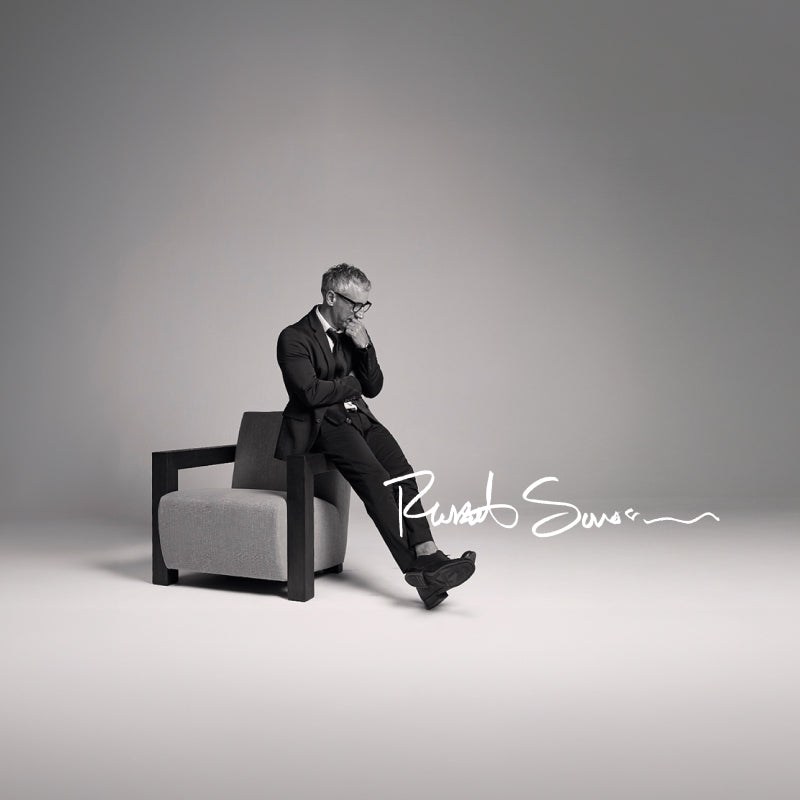
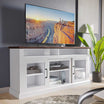
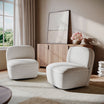
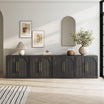
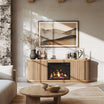


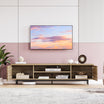



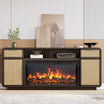
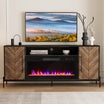
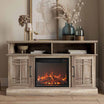
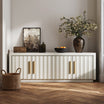
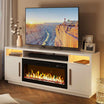
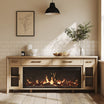
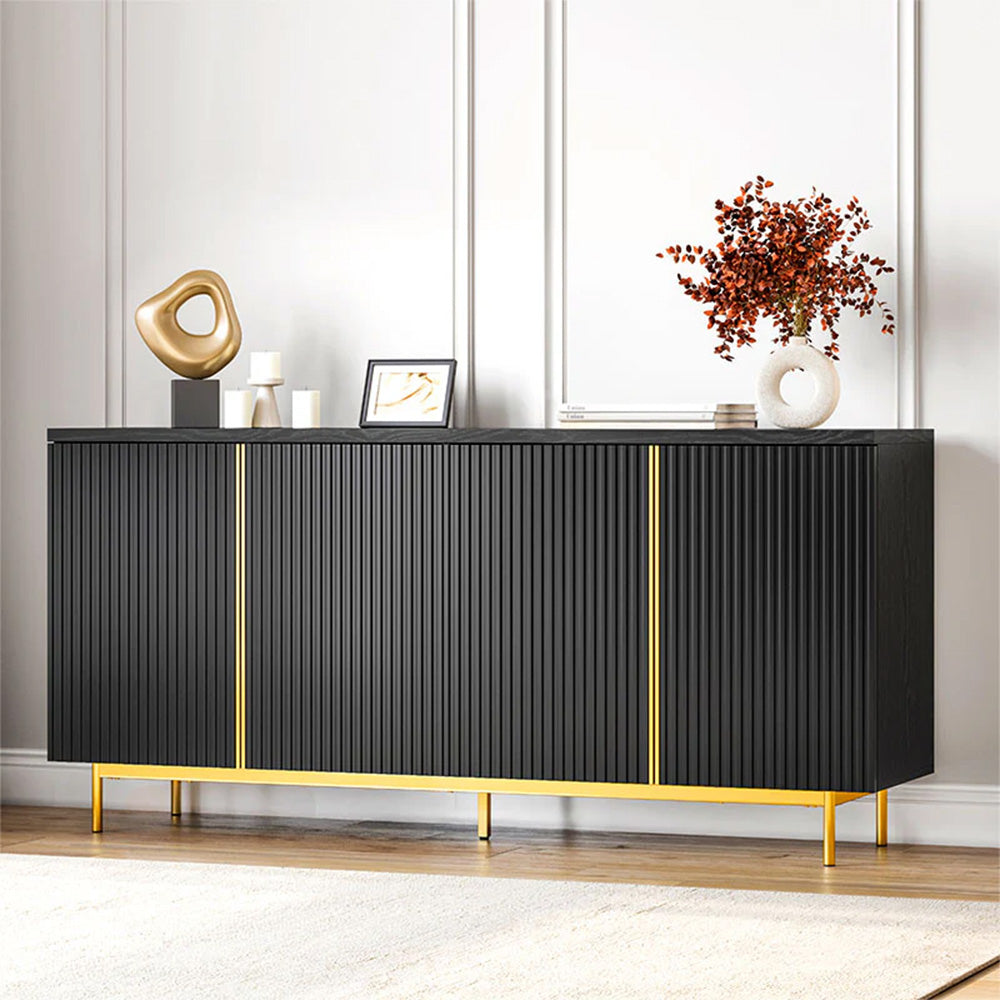
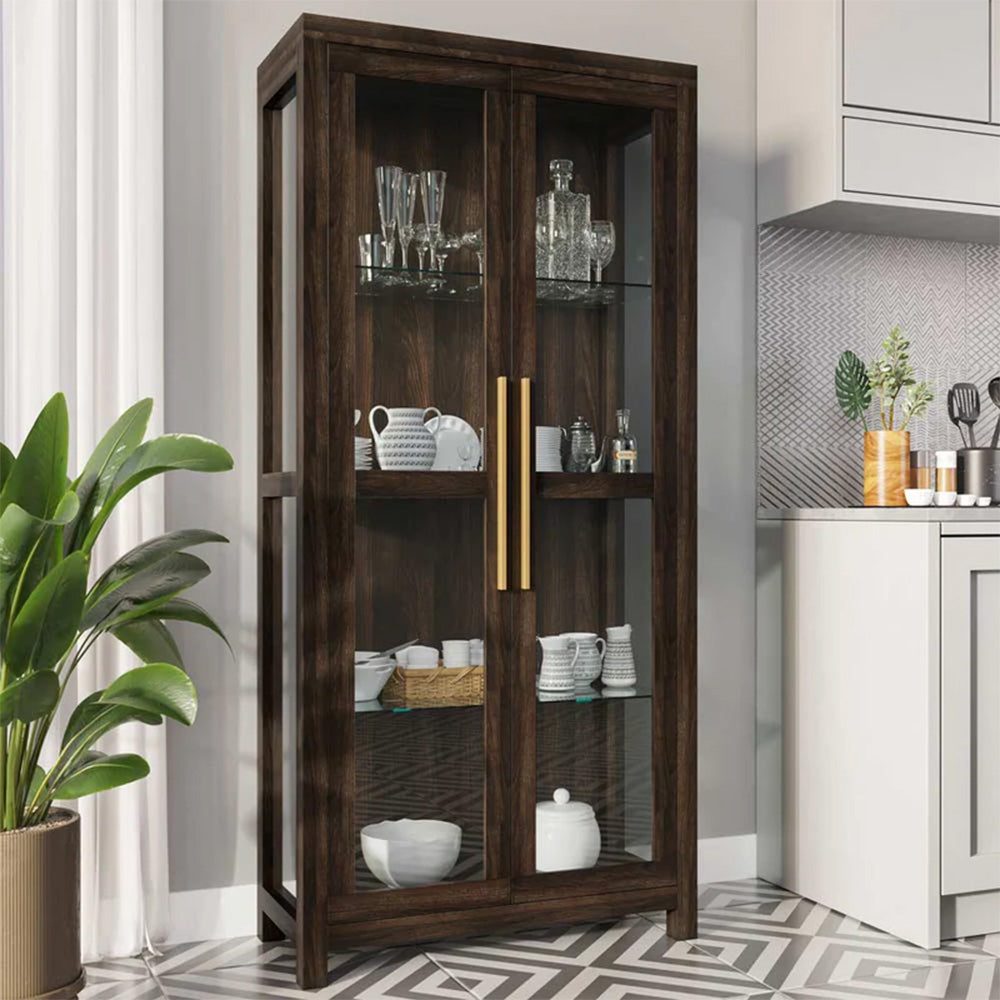

Leave a comment
This site is protected by hCaptcha and the hCaptcha Privacy Policy and Terms of Service apply.